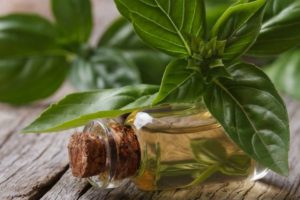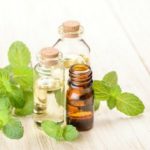Todays post is a special gift from a new-found friend! Donna McGee from Donnatrition Wellness! This amazing woman was able to heal herself from Chronic Fatigue Syndrome using nutrition!! Please check out her story/ amazing recipes/ and essential oil info HERE. You can also click the link on the side of my page to connect with her!!!
What Are Essential Oils?
If you have ever enjoyed the scent of a flower, you have experienced the aromatic properties of essential oils. These aromatic compounds are found in the seeds, bark, stems, roots, and flowers of plants. Essential oils provide plants with protection against environmental threats and play a role in plant pollination. Essential oils have long been used for food preparation, beauty treatment, and health-care practices.
The use of essential oils is not new, there are records of their use thousands of years ago. But they have gained more popularity in recent years as people move away from artificial, chemical laden products in the homes and lives.
When I first started using essential oils I had no idea of what I was doing or where to even start. There were so many different essential oils and essential oil companies it was mind-boggling. So I started out on a journey to learn as much as I could. My search turned up these basic principles:
Everyone Has To Start Somewhere.
Most of us have not grown up using essential oils and that’s okay. You are not alone on your journey of understanding. I will help guide you through the terminology, jargon, recipes and the excitement of using essential oils.
Not All Essential Oils Are Created Equal.
It takes a lot, and I mean a lot, of raw material to make a small amount of essential oil. Therefore, if you find a cheap oil it is probably not a high quality one. Possibly even containing synthetic chemicals. You want to get an oil that is always 100 percent pure therapeutic grade, especially if you are going to use them internally. (More on that later.) You can find the ones I personally use here.
Start With A Few Oils.
The world of essential oils is vast and it is easy to get overwhelmed. Start with a few fragrances that you are familiar with, such as lavender or one of several citrus oils. There are also beginner kits that contain several essential oils along with suggestions for use. The kit I would recommend to start with is this collection of ten nurturing essential oils, including six single oils and four blends. It gives you a good variety of commonly used oils.
History of Essential Oils.
People have been using Essential Oils for over 5,000 years, and scientist, researchers and physicians are just now discovering their potential power. Records show they were use in Egypt, China, Rome, Greece, and other regions in their religious ceremonies, cosmetics. and for medicinal purposes.
In 1922, archeologist Howard Carter and his team discovered the tomb of King Tut. As he surveyed the contents to the tomb, he found 35 alabaster jars had contained scented oils and unguents that had been stolen during a robbery of the tomb.
Essential oils are the natural oils found in many plants, trees and seeds. They come from the many different parts including flowers, leaves, bark, roots, sap and peels. You know the smell of a rose when you passed by? You are smelling the essential oil in the flower. In addition to giving plants their distinctive smells, essential oils provide plants with protection against predators and disease and play a role in plant pollination.
Essential oils are both small in molecular size and contain a chemical called sesquiterpenes. These chemicals are known to be able pass through the blood-brain barrier. This allows the essential oils to interact with the brain cells, unlike most pharmaceutical drugs.
How Use Essential Oils.
Essential oils are used for a very wide range of emotional and physical wellness applications. They can be used a single oil at a time or in complex blends in one of three methods:
Inhalation
Certain essential oils, when diffused, can be very stimulating, while others can be calming and soothing. Diffusing essential oils can also cleanse and purify the air of unwanted odors. Some ways to inhale essential oils are:
Diffusing for an entire room or home. (Ideally for oils that are energizing, antimicrobial, promoting memory and focus, relaxing. Example: lemon, lavender, rosemary.)
Direct inhalation for personal benefits. This can be done with an inhaler or by directly smelling from the bottle. You can also put a drop or two in the palm of your hands and rub them together and then place your cupped hands over your nose and breathe in. I personally use this method for my headaches, sinuses, and when I’m fatigued. (Ideally for personal benefit such as clear breathing, focus, anxiety, headaches, and stress relief. Example: eucalyptus, bergamot, peppermint.)
Steam inhalation, also considered direct inhalation, involves using a bowl of steaming water with a few drops of essential oils in it that you hold your head over with a towel draped over your head forming a tent. (Ideally for clearing the nasal passages and respiratory system. Great for clogged sinuses. Example: eucalyptus, lemon, Melaleuca.)
Sprays have benefits of both inhalation and, in the case of antimicrobial oils, surface cleaning benefits. Combine essential oils, alcohol or witch hazel and distilled water in a spray bottle. Shake well before using and spritz on surfaces, in the air, on clothes or linens as desired. (Ideally for air freshening, cleaning, antimicrobial purposes, and body sprays, and even topical anti-inflammatory benefits and healing. Example: Melaleuca, lemon, thyme. )
Topical
Essential oils are easily absorbed by the skin, hair, and nails and can be safely applied topically. (Some oils should not be applied to the skin without first diluting them with a carrier oil such as Fractionated Coconut Oil, Almond Oil, Jojoba Oil, or Olive Oil.) Some ways to use essential oils topically are:
Direct oils are applied directly on the area of concern. Because the oils are so potent, more is not necessarily better. Usually 1 to 3 drops of oil are adequate. For larger areas mix with a carrier oil.
Massage for stimulation of muscles, skin and connective tissue using a variety of techniques to help promote healing, balance and connections. Massage can be invigorating, relaxing, stimulating or soothing and using essential oils can enhance these benefits.
Reflexology/Reflex Therapy is a simple method of applying essential oils to contact points (or nerve endings, reflex points) in the hands or feet. The oils either help remove blockages along the pathways or travel the pathways to benefit the particular organ in question.
Auricular Therapy oils are applied to the various point on the rim of the ears to effect changes on internal body parts. Small amounts of oil are applied and then stimulated with the fingers or with a glass rod.
Compresses fill a basin with hot or cold water and add the desired essential oils. Stir the water vigorously and then lay a towel on top of the water. The oils will float on top of the water and so the towel will soak them up with the water. Once the towel is saturated, wring out the excess water and place the towel over the area needing the compress. For a hot compress, cover with a dry towel and a hot water bottle. For a cold compress cover with a piece of plastic wrap and an ice pack.
Additionally, after a massage, you can apply the hot wet towel and then a dry towel on top of the massaged area. The moist heat will force the oils deeper into the tissues of the body.
Baths essential oils can be added to the bath water in a tub, in Bath and Shower Gel, Bath Salts, on a washcloth or as a body spray.
Internal
Certain essential oils have a rich culinary history and can be used as dietary supplements for targeted wellness. Only pure, therapeutic-grade essential oils should be used for internal consumption. Other oils on the market could be diluted or processed using harmful chemicals not intended for internal use. Some ways to use essential oils internally are:
Sublingual one of the most effective way to take essential oils internally. Place a drop or two of essential oil under the tongue where blood capillaries are close to the surface. Many oil constituents are able to pass directly into the bloodstream, where they can quickly travel to the different areas of the body where they are needed. This enables rapid absorptions and bypasses the digestive system and the first-pass metabolism in the lives.
Capsules essential oils can be placed inside an empty capsule and then swallowing it. It is common to dilute the pure essential oil by filling the remainder of the capsule with olive oil before closing and swallowing. This is an effective way of taking oils that have a less than desirable taste.
Beverages offer an easy way to take essential oils internally. Place 1 drop of essential oil in 1 to 4 cups of almond milk, coconut milk or water before drinking. I personally put essential oils in my smoothies before blending.
Cooking essential oils can be easily incorporated into your cooking. But remember they are VERY concentrated and usually you only want to add 1 drop or less. Use a toothpick to help control the addition of smaller amounts of oil by dipping the toothpick into the oil and then stirring it into the food.
Bottom Line.
Essential oils are both exciting and promising when it comes to taking care of your own and your family’s health. Whether you’re applying essential oils topically, enjoying the aromatic benefits through diffusing, or taking essential oils internally, the positive effects of essential oils are boundless.
That’s why you’ll want to ensure that the essential oils you are using are capable of delivering on their promise. You’ll want to make sure that you are choosing essential oils for their potency and their purity.
And remember never stop learning, the more we learn the better we can use essential oils to their fullest benefit.
These statements have not been approved by the Food and Drug Administration. These statements are not intended to diagnose, treat, cure or prevent disease.
Pregnant or lactating women and persons with known medical conditions should consult a physician prior to the use of any of these products.
Thanks so much to Donna for sharing this wealth of knowledge with us and check her out!!! Share below in the comments any experiences you have had using essential oils along with any more info or topics you would like to know more about!







